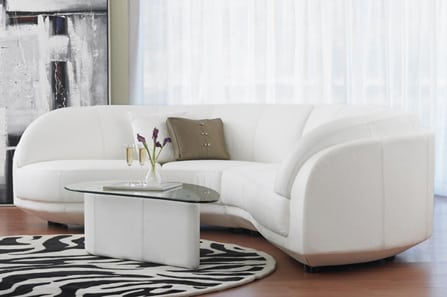We’ve all heard the phrase “beauty is in the eye of the beholder,” but have y’all ever heard “good interior design is in the eye of the beholder?” We sure haven’t heard that one yet! While tastes can vary quite a bit, there are certain aspects of design that all people appreciate, such as cleanliness, harmony, and balance. We’re not just saying that either, scientific studies strongly suggest a near universal preference for these qualities.
There’s a relatively new field of research called “neuroarchitecture.” The focus of neuroarchitecture is the intersection of design and psychology. Current research in this field is focused on how factors like light, space, color, and room layout affect physical and psychological well-being. Pretty cool, right? Below are a few interesting tips from neuroarchitecture experts who were interviewed by O Magazine.
While our designers at Brown Interiors already knew from experience that a carefully designed room fosters a particular mood or feeling in a room, it’s nice to see that even scientists can appreciate the importance of design!
Let There Be Light! (And lots of it!)
Getting enough light when you’re awake and turning it down when you need to sleep is extremely important for your body to regulate sleep patterns and other normal biological processes. Dimmers, lamps, light fixtures, and new window treatments can help you regulate how much light you’re getting, or not getting. So be good to yourself and don’t settle for that tiny Ikea lamp when you have to be up late at night! Lots of light will help keep you awake.
 |
| If you live close to the Arctic Circle, this is especially important. |
Own Your Space!
Putting a personal touch on a room can help you relax and feel grounded. Whether its original art or pictures that you put in a dorm room or office, reflecting yourself in a room can help you feel at home, even when you’re not.
 |
| When we say original art we also mean finger painting. No one else in the world can make that hand print! |
Love Your Curves!
Anyway, our basic survival instinct to avoid injury makes us constantly aware of our surroundings, even at home. When you want to make comfort paramount, consider choosing pieces with rounded corners. If you’re constantly worried about bumping into the edge of your nightstand, it might be keeping you from relaxing in your own bedroom!
 |
| Unfortunately for someone who is as clumsy as I am, no amount of rounded curves will help me from bumping into tables. |
Colors Matter Too!
While there is endless discussion about which colors mean what, and colors make us feel, colors have cultural connotations, and some studies suggest they can even cause a physical reaction in us. So maybe consider whether or not you want to paint your entire bathroom red, because you might just make your guests a bit uncomfortable when they start subconsciously associating you the movie The Shining.
 |
| Well, maybe I’ve watched too many horror movies, but it’s still important to consider how a color fits in the context of your room. |
Redecorating is Good for the Soul! (really)
Even if your home is beautifully decorated right this very moment, rearranging and refurbishing what you have can help your space feel new again. The human brain is set up to getting used to seeing the same thing everyday. It’s how our brain works. We like novelty. That’s why babies look like they’ve won the lottery when they see something for the first time! If your space is feeling a little drab, we would love to help you make it feel new and exciting again!